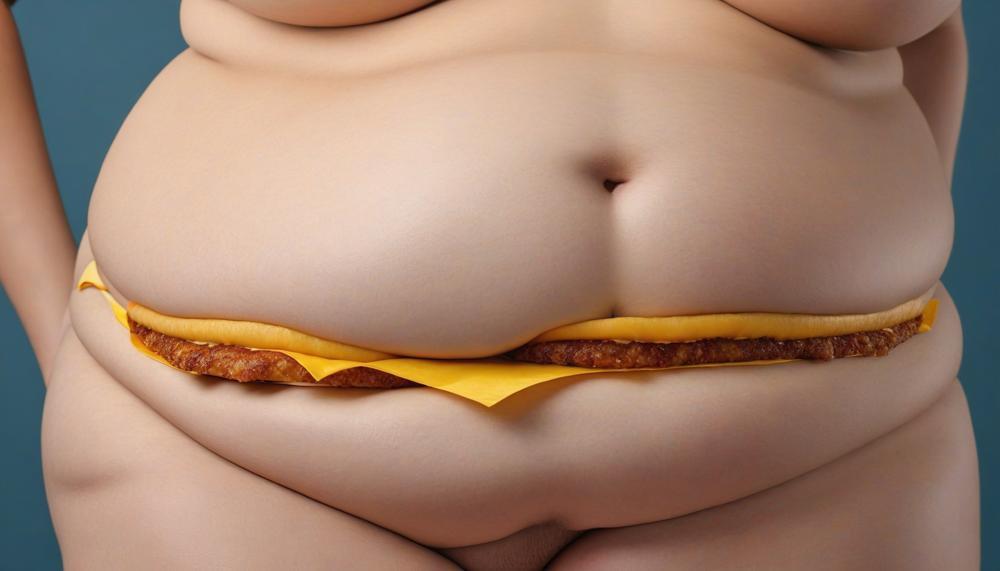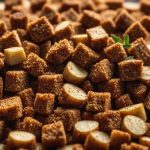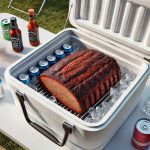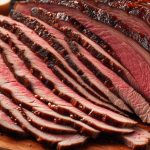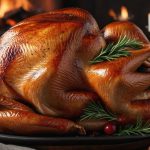One of the most hotly debated topics in the world of smoking meat is whether to cook your brisket with the fat side up or down. The simple answer? Both methods have their merits, and the best choice depends on your personal preference and the type of smoker you’re using.
Fat-side-down can slow cooking, prevent burning, and insulate the meat, helping to retain moisture and create a tougher bark on the meat side. This method is often favored for its ability to produce a richer taste and more smoke, especially when using charcoal smokers. On the flip side, fat-side-up can make slicing easier, create a more visually appealing presentation, and ensure even fat rendering, resulting in a juicy and tender brisket.
In short, the fat-side-up or down debate is not about right or wrong but about discovering what suits your cooking style and desired outcome. Whether you’re aiming for a smoky, well-insulated cut or a beautifully presented, evenly rendered brisket, experimenting with both methods will guide you to the perfect barbecue experience.
Key Takeaways:
- Fat-Side-Down: Slows cooking, prevents burning, retains moisture, and creates a harder bark.
- Fat-Side-Up: Easier slicing, better presentation, even fat rendering.
- Experimentation: Try both methods to see what works best for your smoker and taste preferences.
Contents
Brisket Fat Side Up or Down
The short answer is fat side down.
Placing the brisket with the fat side down is often recommended for several reasons:
- Heat Protection: On most smokers and grills, the heat source comes from below. Placing the fat side down shields the meat from direct heat, preventing it from drying out and burning.
- Better Bark: Cooking fat side down allows the meat side to develop a richer, crisper bark. This caramelized crust enhances both texture and flavor.
- Consistent Results: Experts like Traeger’s Chad Ward suggest that fat side down ensures more consistent cooking and easier slicing. The fat renders into the meat, keeping it moist without washing away the seasoning on top.
- Presentation: For those concerned with aesthetics, cooking fat side down generally leads to a more visually appealing final product, as the meat side is showcased.
However, some pitmasters, like Matt Pittman of Meat Church, advocate for cooking fat side up, claiming it provides a juicier mouthfeel. Ultimately, the choice can depend on your specific grill or smoker setup and personal preference. Experimenting with both methods might help you determine which works best for you.
Here is a summary of the benefits of each method:
| Method | Benefits |
| Fat Side Down |
|
| Fat Side Up |
|
A Word About Brisket Fat
The role of brisket fat in the grilling process is pivotal for both flavour and moisture. As the brisket cooks, the intramuscular fat, known as marbling fat, melts and bastes the meat internally, ensuring it remains juicy and tender.
This natural basting process contributes significantly to the rich, succulent texture that makes brisket so popular.
Placement of Brisket Fat:
The placement of the brisket fat, whether up or down, can markedly influence the final outcome of the cooked meat. Here’s how:
| Placement | Impact | Considerations |
| Fat Side Up | – Fat melts and bastes the meat from above, adding moisture. – Acts as an insulator, potentially protecting the meat from direct heat. |
– Ideal for low and slow cooking. – Can create a juicier mouthfeel. – May lead to less crisp bark on the meat’s surface. |
| Fat Side Down | – Direct contact with heat creates a crispy, caramelized bark. – Can result in a more evenly rendered fat. |
– Best for higher temperature cooking. – Protects the meat from the heat source, which can prevent drying out. – Enhances the meat’s exterior texture. |
Expert Insights:
Fat Side Up:
This method is often preferred by those who enjoy a more moist and tender brisket. The melting fat bastes the meat throughout the cooking process, enhancing flavour and juiciness. However, it may result in a softer bark and less pronounced caramelization on the meat’s surface.
Fat Side Down:
Opting for fat side down can produce a beautifully crispy, flavourful bark. The direct heat contact renders the fat more effectively, creating a desirable texture on the outside. This method is particularly advantageous when cooking at higher temperatures or using a grill where the heat source is directly beneath the meat.
How To Trim The Brisket
Trimming a brisket is an essential step to ensure even cooking and a delicious final product. Follow these steps for properly trimming a brisket, and consider the placement of the fat side during the process.
Steps for Properly Trimming a Brisket
| Step | Description | Additional Tips |
| Identify Sides | Distinguish between the meat and fat sides of the brisket. | Look for a thick fat layer on one side. |
| Fat Side Up | Place the brisket fat side up on your cutting surface. | This side requires more trimming attention. |
| Trim Mohawk and Hump | Trim down the thicker fat areas to about 1/4 inch thickness. | Ensures even cooking. |
| Address Slope and Fat Cap | Trim the fat cap uniformly to 1/4 inch thickness. | Promotes even fat rendering. |
| Point Meets Flat | Trim excess fat where the point muscle meets the flat muscle. | Ensures consistent cooking. |
| Utilize Trimmings | Save trimmed pieces for tallow or burgers. | Reduces waste and provides additional uses. |
Fat Side Up or Down During Cooking?
The decision to cook brisket fat-side-up or fat-side-down depends on your specific smoker and personal preference:
Fat Side Up:
This method allows the fat to render and baste the meat as it cooks. It also creates an attractive presentation and makes slicing easier.
Fat Side Down:
Cooking fat-side-down can prevent the meat from burning, especially on hotter surfaces. It insulates the meat, retains moisture, and helps create a harder bark on the meat side. This method is often preferred for charcoal smokers as it creates more smoke.
Brisket Fat Side Up or Down?
The recommended position for the fat side of a brisket when grilling is down. This is crucial for several reasons:
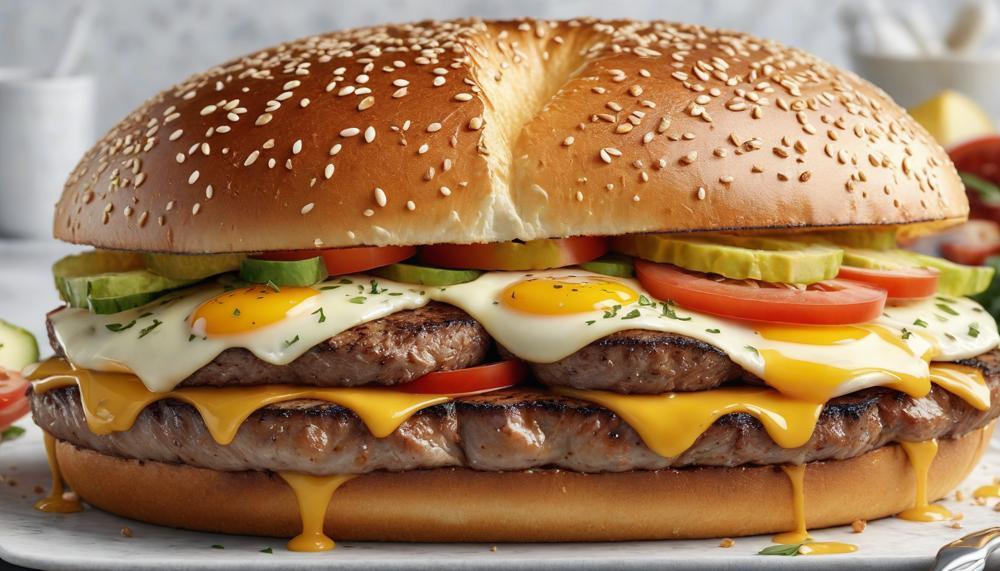
- Protection from Heat: Placing the brisket fat side down shields the meat from direct heat, particularly if the heat source is from the bottom, preventing the meat from drying out.
- Spice Rub Preservation: Cooking fat side down helps preserve the spice rub on the meat, keeping it intact and preventing burning, which can affect the flavor.
- Tenderness and Juiciness: The fat layer acts as a barrier, maintaining the meat’s moisture and tenderness during the long cooking process.
- Bark Formation: While some argue that fat side up enhances bark formation on the meat side, the rendered fat does not significantly self-baste the meat as once believed. Cooking fat side down can still result in a desirable bark while protecting the meat.
Why is this important?
Grilling brisket with the fat side down ensures a more consistent and controlled cooking process. It helps achieve a tender, juicy brisket with a well-developed bark, enhancing both the texture and flavor of the final product.
| Factor | Fat Side Down | Fat Side Up |
| Heat Protection | Shields meat from direct heat, preventing drying | Exposes meat to direct heat, increasing risk of drying |
| Spice Rub Preservation | Preserves spice rub, prevents burning | Spice rub may burn or wash off with rendered fat |
| Moisture and Tenderness | Maintains moisture, resulting in tender meat | Less effective in self-basting; minimal moisture impact |
| Bark Formation | Good bark formation, with meat protection | Potentially better bark, but higher risk of drying |
A Word About Heat Sources
The different heat sources for grilling include conductive, convective, and radiant heat, each affecting how you place the fat side on meat for optimal results.
- Conductive Heat: This involves placing the meat directly on the grill grates over direct heat. Conductive heat sears the meat, creating grill marks and cooking from the outside in. When using conductive heat, place the fat side down to protect the meat from burning and to develop a good crust.
- Convective Heat: This is indirect heat, circulating around the meat, usually with a lid closed. It’s akin to roasting, cooking the meat more evenly. For convective grilling, it’s advisable to position the fat side up, allowing the fat to melt and baste the meat, keeping it moist and flavorful throughout the cooking process.
- Radiant Heat: Often used in gas or infrared grills, radiant heat cooks the meat through infrared radiation. This type of heat can be intense and direct. If grilling with radiant heat, place the fat side down initially to shield the meat from the high temperatures, then flip it to allow the fat to render and enhance the flavor.
The Texas Crutch
The Texas Crutch is a barbecue technique used to maintain moisture and reduce cooking time for large cuts of meat like brisket or pork butt. This method involves wrapping the meat in foil or butcher paper partway through cooking.
The Texas Crutch helps push through the “stall,” a period where the meat’s internal temperature stops rising due to evaporative cooling. By wrapping, the meat retains more heat and moisture, speeding up the cooking process and resulting in a tender, juicy product.
Impact on Fat Side Up or Down Decision
The choice of whether to place the fat side up or down when using the Texas Crutch hinges on how you want to manage heat distribution and fat rendering during the cook:
- Fat Side Up: This allows the fat to baste the meat as it renders, potentially adding flavor and moisture. However, when using the Texas Crutch, the wrapping will limit the basting effect since the liquid gets trapped in the wrap. Placing the fat side up might not significantly enhance the meat’s flavor when wrapped, as the benefits of self-basting are reduced.
- Fat Side Down: This position offers a protective barrier between the meat and the heat source. When using the Texas Crutch, placing the fat side down is often preferable because it shields the meat from direct heat, which is critical when wrapped. This method helps prevent the bottom from becoming too mushy and ensures even cooking. It also helps maintain a more uniform texture, as the heat is less likely to directly affect the meat.
Pros and Cons of Texas Crutch
| Pros | Cons | Meat Placement Impact |
| Reduces cooking time significantly. | Can soften the bark, reducing its crunch. | Fat side down protects the meat from direct heat when wrapped. |
| Retains moisture, resulting in juicier meat. | Limits smoke flavor penetration after wrapping. | Fat side up provides limited benefit when wrapped as self-basting is less effective. |
| Helps push through the stall effectively. | May result in less pronounced bark texture. | Ensures more even cooking and moisture retention when fat side is down. |
Conclusion
When deciding whether to cook your brisket fat side up or down, the answer is both methods have their merits. The choice largely depends on your personal preferences and the type of smoker you’re using.
Cooking fat side down shields the meat from direct heat, making it ideal for grills where the heat source is below. This method helps prevent the meat from drying out and creates a beautifully crisp, caramelized bark on the meat side. It also ensures consistent cooking results and an attractive presentation, as the meat side is showcased.
On the other hand, cooking fat side up allows the fat to melt and baste the meat, resulting in a juicier brisket. This method is often preferred for its ability to create an evenly rendered fat layer and an easier slicing experience, especially when using low and slow cooking methods.
Ultimately, the debate of fat side up or down is about discovering what works best for your specific setup and taste preferences. Experimenting with both methods will help you find the perfect balance for your ideal barbecue experience.

